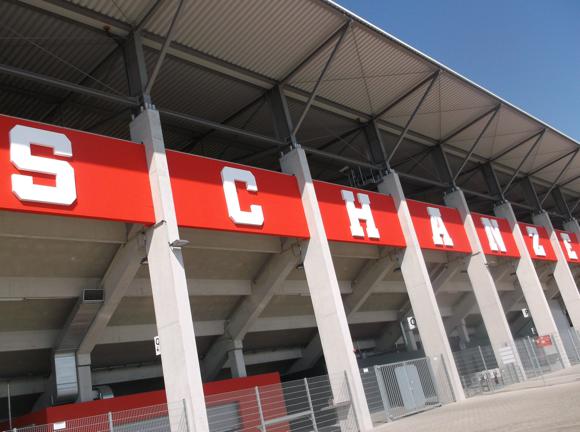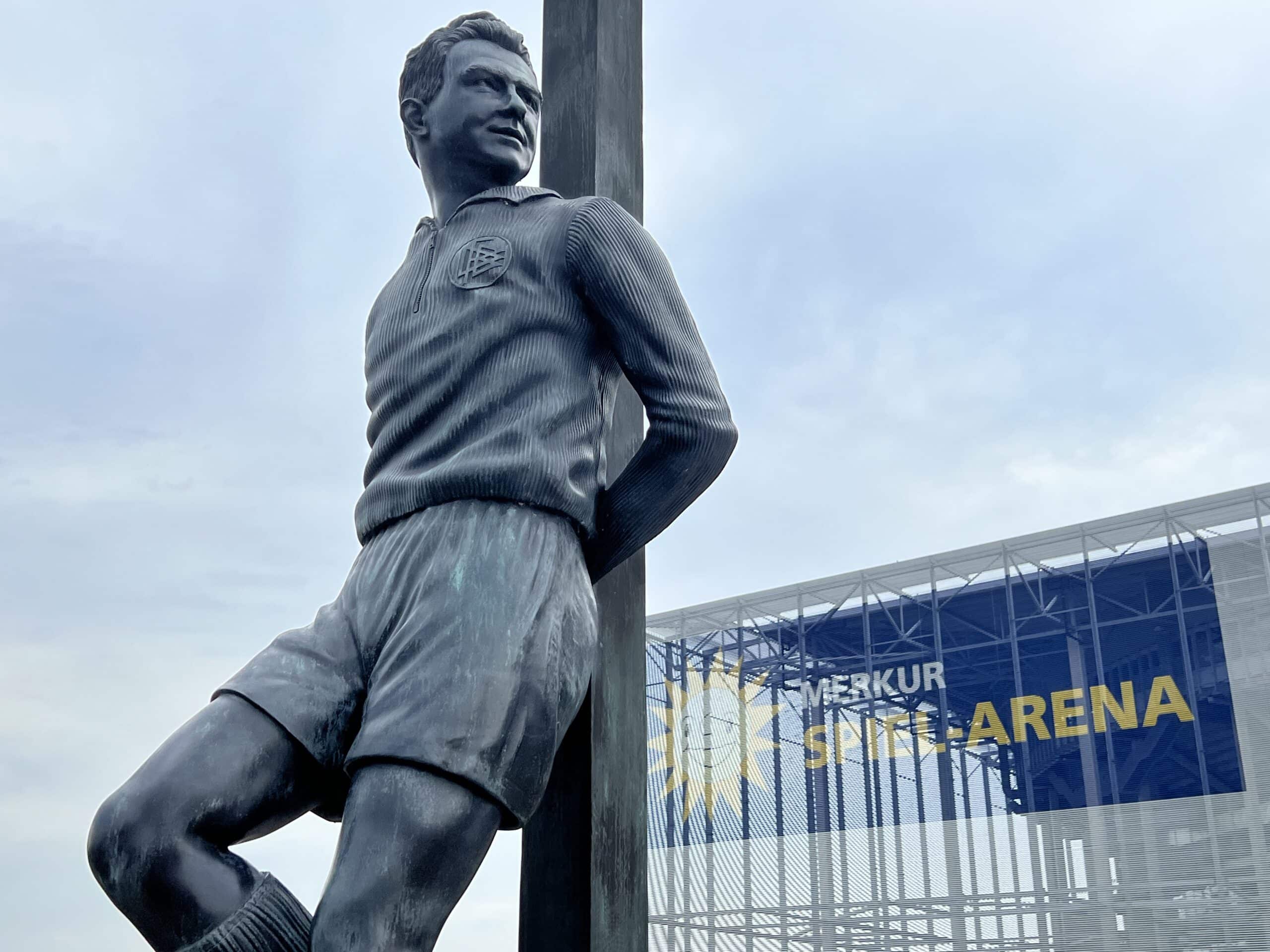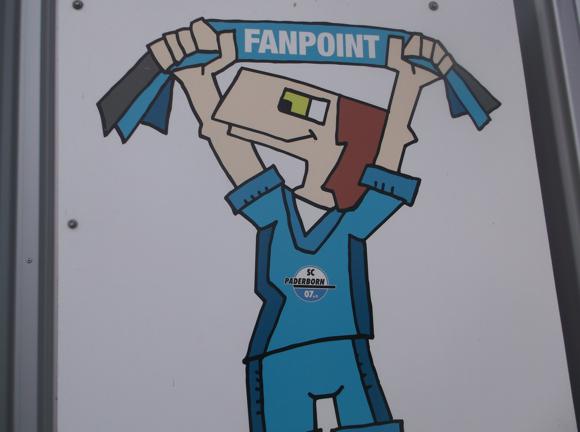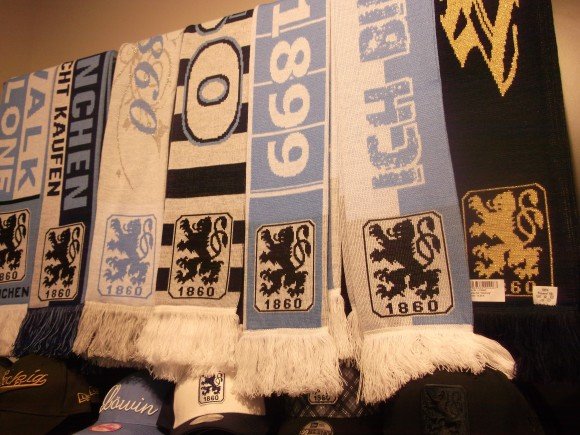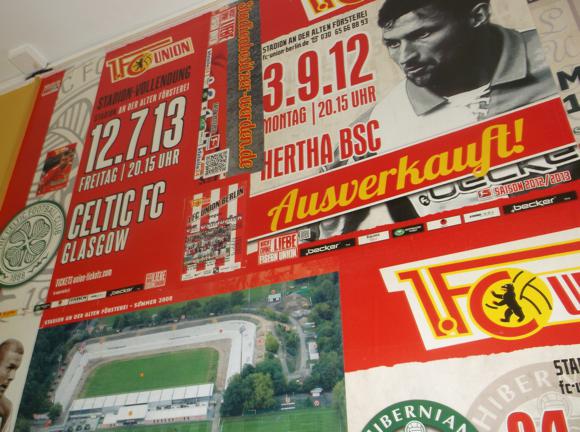A fan’s guide – the club from early doors to today
Qualifying for Europe in 2014-15 after coming so close the season before, FC Augsburg are enjoying the best spell in the club’s history.
The 1969 amalgamation of Ballspiel-Club Augsburg and TSV Schwaben, with tangled roots dating back to 1907, FC Augsburg first had to work hard to gain acceptance with locals. It took the return of the city’s favoured football son, 1966 World Cup star Helmut Haller, to bring crowds back to the Rosenaustadion.

Opened in 1951, the Rosenaustadion saw its largest league attendances in 1973 and 1974 when a Haller-inspired FCA created near pandemonium, and gained promotion to the second flight. Suffering from an obvious gap in class, FCA then persuaded a 38-year-old Haller back in 1977 – to no avail. FCA went down, Haller retired, and despite a brief revival shortly afterwards, the debt-ridden club would spend the next three decades in the regional ranks.
Salvation came in the form of Walther Seinsch, a former tax consultant who became FCA chairman in 2000. His efforts to revive the ailing club on and off the pitch appeared fruitful when FCA only needed to overcome Jahn Regensburg on the last day of the 2004-05 season for a place in the Zweite. Two late goals put paid to FCA’s ambitions but, to their credit, Seinsch and team dug in, and gained promotion a year later.
With FCA enjoying second-flight status for the first time in 23 years, Seinsch got to work on building a new arena to replace the Rosenaustadion.

Starting the 2009-10 season in the then named Impuls Arena, FCA duly put in their best-ever performance, reaching the semi-finals of the German Cup and the play-offs for the Bundesliga. Although defeated by Werder Bremen and 1. FC Nürnberg, FCA were ready for the big time.
A year later, with a draw against already promoted Hertha Berlin, FCA reached the Bundesliga for the first time. Goals from strike duo Angolan Nando Rafael and Stephan Hain gave FCA the edge over Bochum, equal on points.
The once named SGL Arena was filled to near capacity all through the first Bundesliga season of 2011-12, as FCA started brightly but then fought tooth-and-nail to stay up. With the struggle equally intense in 2012-13, manager Markus Weinzierl, formerly at Jahn Regensburg, worked near miracles to gain eighth place for Augsburg in 2013-14.
Weinzierl went three better in 2014-15, goals from Raúl Bobadilla helping bring rare European football to the SGL in 2015-16.
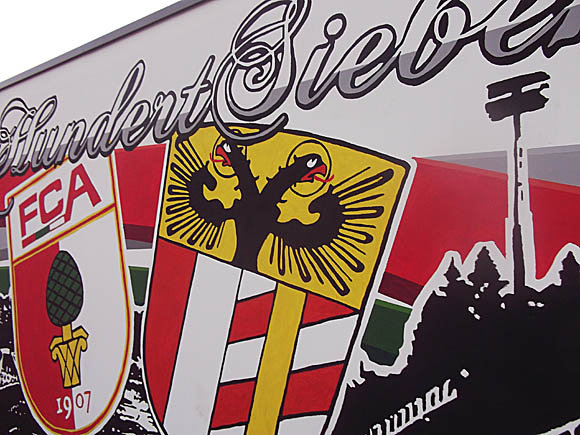





Stadium Guide
The field of dreams – and the stands around it



Opened in July 2009 as FC Augsburg were becoming a serious proposition in the Zweite, the out-of-town Augsburg Arena had been built in under two years. Once promoted in 2011, FCA attracted a near full house for two seasons. The plan has always been to increase the current capacity of 30,600 to 49,000 – though surely top-flight football would be a pre-requisite for such expansion.
Ten years before the grand opening against a Swabian select XI, the idea of a new stadium and Bundesliga football would have been inconceivable. FCA, deep in debt and way down the league ladder, were playing at the Rosenaustadion, built between 1949 and 1951 from war-time rubble.
The Rosenaustadion was home to the city’s main club Ballspiel-Club Augsburg, BCA, who drew significant crowds to this humble location by the river, about 1km south-west of the train station. In 1952, it staged a friendly between West Germany and Switzerland in front of 64,500.



With the formation of FC Augsburg from BCA in 1969, crowds dropped, except for two short spells when FCA attracted BCA old boy Helmut Haller to run out for them. Both stadium and club were going to the dogs until current FCA chairman Walther Seinsch arrived in 2000.
While funding a club capable of top-level football, Seinsch located a much-needed new arena south of the city, past the modern University Quarter, in an area of affordable land with little but factory plants nearby.
The arena was built with football in mind, with standing places for more than a third of the overall capacity in the north home end, the Stehbereich Heimfans, sectors K-O. Away fans are in the Y sector of the opposite goal, and W and X in the adjoining corner beside the Gegengerade.
The best seats are in sectors S-U in the Gegengerade, and D and H either side of the business seats in the Haupttribüne.
getting there
Going to the stadium – tips and timings
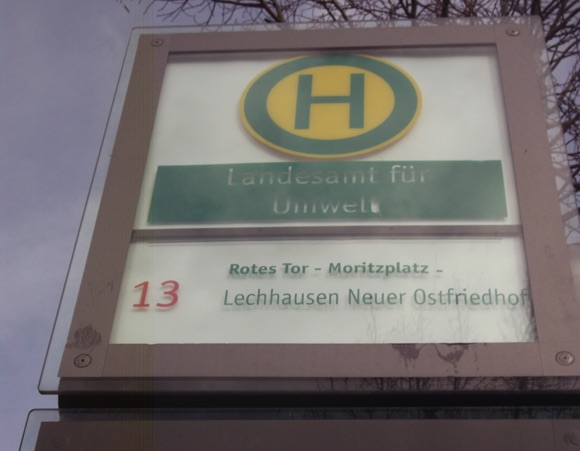
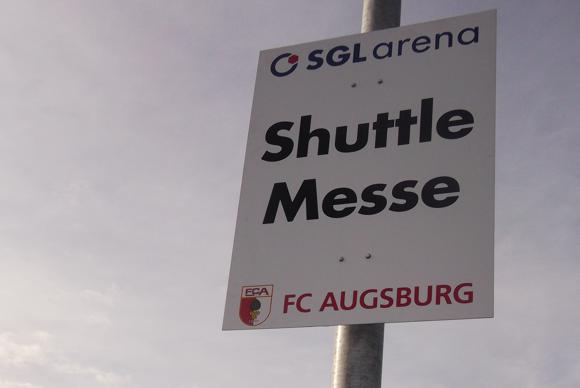
Two hours before kick-off, special trams run every five minutes from to the stadium from the train station, journey time 20mins, and back again after the game in 2-3min intervals. Match tickets are valid, but not for public transport run by city transport company AVV. The tram terminus is Sport-Arena, the other side of Bürgermeister-Ulrich-Straße – you’ll cross two overpasses before reaching the stadium.
Tram 13 currently runs from the city centre (Moritzplatz, Rotes Tor) down to the stadium, although city maps and the stadium website indicate a Tram 3. The city centre is currently undergoing major redevelopment – but the tram network has no direct link between train station and stadium in any case. Moritzplatz is no more than a 10min walk from the station, over focal Königsplatz.
The stadium website also suggests Siemens II as the nearest regular tram stop to the stadium, on Unterer Talweg, but the one before, Landesamt für Umwelt, is considerably closer. From there, walk down the street at right-angles, Bürgermeister-Ulrich-Straße, and then over the two overpasses.
getting in
Buying tickets – when, where, how and how much
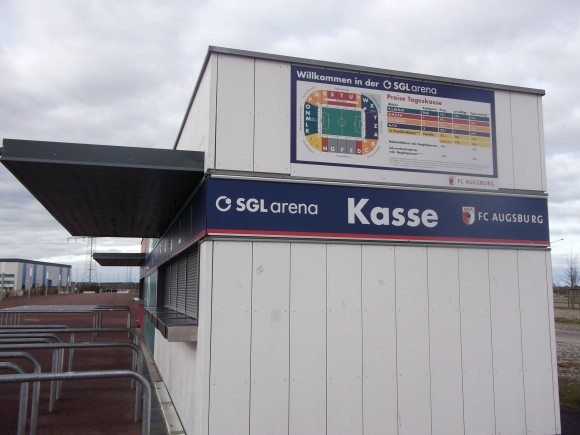

Advance tickets are sold at the FCA-Café (Mon-Fri 9.30am-7pm, Sat 10am-6pm), near the station at Bahnhofstraße 7 and at two central distribution points, the AZ-Kartenservice (Maximilianstraße 3) and the Kartenservice GS Königsplatz (Konrad-Adenauer-Allee 11). There are also ticket windows to the right of the Fan-Shop tent outside the main entrance on match days. There’s an online service too.
The best seats (€39) are in the Gegengerade and outer sectors D and H in the Haupttribüne. There are €29 seats in the corners, the Kurve Nord-Ost and Kurve Süd-West, and €23 ones behind the Tribüne Süd goal beside the away sector. Standing tickets (€13) in the home end will be taken up, most certainly central block M. There’s a €2-€4 supplement for bigger matches.
what to buy
Shirts, kits, merchandise and gifts


At the FCA-Café (Mon-Fri 9.30am-7pm, Sat 10am-6pm), near the station at Bahnhofstraße 7, bright red, green and white merchandise includes egg cups, breakfast trays and tattoos.
There’s also a Fan-Shop tent in front of the main entrance on match days.
Stadium tours
Explore the stadium inside and out

Sixty-minute stadium tours (€5) can be organised upon request – send an email to fuehrungen@fcaugsburg.de.
Where to Drink
Pre-match beers for fans and casual visitors


The only bars at or around the stadium are in the Business Club, where you’ll find the LEW Sportsbar also open to screen away games and big European matches. Payment at stadium kiosks is with the cash-free FCA-Card available all round the ground. There’s no real bar en route to the ground either.
Some fans sink a bottled beer at the age-old Rotes Tor kiosk by the transport hub of the same name, at the south-eastern edge of the city centre, an easy hop onto the No.13 tram afterwards. Note that the FCA-Café on Bahnhofstraße isn’t really a café – more a club shop and ticket office with a self-service coffee machine at the back.














